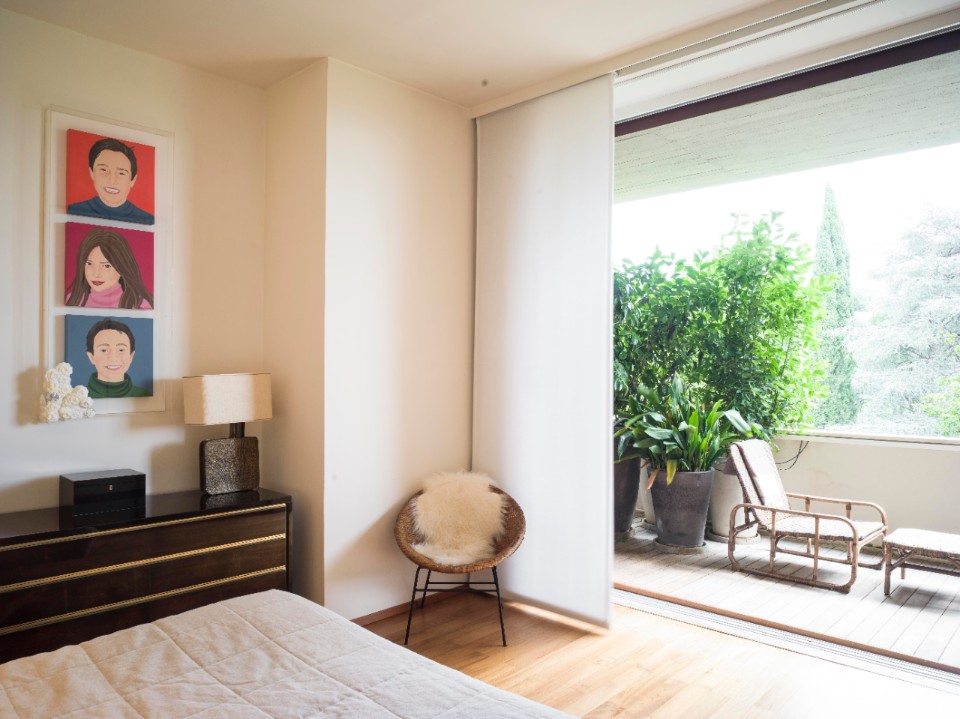Located in the hills surrounding Florence, this home was renovated by architect Caterina Valenti for an art and design lover. The discreet and careful intervention, in line with the 1960s and 1970s style of the building, involved all spaces while retaining some of the original furnishings. The property, the result of the integration of two flats, is distributed over 350 square metres and is emphasised by the relationship between art works and design pieces.
“This project was born as a continuum of the first renovation carried out in the 1970s by architect Paolo Piazzesi (of whom I was a student and close collaborator) and was realised in several steps: a first renovation in 2007, a second in 2012, and another in 2018, when the property decided to buy the adjacent flat and merge the two units”, explains the designer.
The flat has two entrances, two dining areas, a bar area, two living rooms, six rooms and seven bathrooms, while outside, a terrace surrounds almost the entire flat. The furnishings, colours and materials – in particular wood, marble, ceramics, metal – recall the 1960s and 1970s, proposing a dynamic and vibrant language.

In every room, particular attention has been paid to the use of wood. This can be seen in the choice of wood types and the laying of the grain, carried out “door by door, drawer by drawer”, as the architect specifies. A traditional but always up-to-date material, wood stands out in the original boiseries in the living room, the wooden bench in the kitchen and the bar zone. But extreme care for materials and textures also emerges from the individually designed marble surfaces, white in the kitchen and black in the bathroom, the ceramics of the washbasin, a unique piece, the metals of the specially designed handles and the brass tops of the bar.
“The bar area was created at the request of the owners with the intention of providing an open area to the dining room without limiting the visibility of the terrace and the view”, says the architect. “For this purpose, Lanfredo Landini, a carpenter who has taken part in the realisation of many of the existing furnishings, was called in, and I designed this long, narrow bar that is not only a countertop but also a container: the top consists of four drawers and the supporting leg, covered in leather, is a glass holder. The structure behind the counter is instead made up of wooden doors and drawers with brass top and joints”.




















